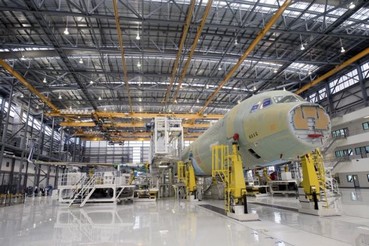U.S. factory, construction data point to tepid growth

U.S. manufacturing contracted further in December as lower oil prices undercut spending in the energy sector while construction spending fell in November for the first time in nearly 1-1/2 years, suggesting the economy ended 2015 with less momentum.
The downbeat reports on Monday cast a dark cloud over the near-term growth outlook and prompted economists to sharply lower their growth estimates for the fourth quarter.
“The year begins with manufacturing activity shrinking and, looking further in the data, the shrinkage looks to be increasingly sourced in domestic demand rather than exports,” said Steve Blitz, chief economist at ITG Research in New York.
The U.S. Institute for Supply Management (ISM) said its index of national factory activity fell to 48.2 from 48.6 in November and is now at its lowest level since June 2009. While a reading below 50 indicates a contraction in manufacturing, the index remains above 43.1, which is associated with a recession.
Manufacturing, which accounts for 12 percent of the economy, has also been hammered by a strong dollar, as well as slower global demand and efforts at home by businesses to reduce an excessive inventory build, which are keeping downward pressure on new orders.
The weak reports combined with downbeat factory data from China put pressure on U.S. stocks. Prices for U.S. Treasury debt prices rose, while the dollar trimmed gains versus a basket of currencies.
The ISM said a gauge of new orders rose 3 percentage points, but remained in contractionary territory. Export orders gained 3.5 percentage points to 51.0 last month, suggesting much of the weakness could be concentrated in the energy sector.
Manufacturers in the petroleum and coal products sector said low oil prices were “negatively” impacting oil and gas exploration activities. Their counterparts in the fabricated metal products segment reported that activity was “still very slow due to oil prices.”
Plunging crude oil prices, which last month plumbed their lowest levels since 2004, have put pressure on oilfield services firms like Schlumberger and Halliburton , forcing them to slash capital spending budgets.
“But while low oil prices do weigh on activity in certain industries, they are unequivocally a positive for the U.S. economy as a whole,” said Harm Bandholz, chief economist at UniCredit Research in New York.
“As this aspect is not captured by the ISM survey, we think that the latter underestimates the underlying pace of activity.”
Ten out of 18 manufacturing industries, including apparel, machinery, primary metals and electrical equipment reported contraction in December. The six reporting growth included textile mills, paper products and chemical products industries.
Inventories at manufacturers rose slightly, but that was offset by an increase in customers reporting stocks of unsold goods were too high. With activity weakening, manufacturers adjusted their hiring plans. The employment index fell to 48.1 from 51.3 in November.
An alternative reading from private data vendor Markit showed continued expansion in manufacturing but at a slower pace. Markit’s purchasing managers’ index (PMI) fell to 51.2 from 52.8 in November, the lowest since October 2012.
In a separate report, the Commerce Department said construction spending slipped 0.4 percent, the first and also biggest drop since June 2014, after a downwardly revised 0.3 percent gain in October.
The government revised construction data from January 2005 through October 2015 because of a “processing error in the tabulation of data.”
The revisions, which showed construction spending was not as strong as previously reported for much of 2015, prompted economists to lower their fourth-quarter gross domestic product estimates by as much as three-tenths of a percentage point to as low as a 1.1 percent annual pace.
The economy expanded at a 2.0 percent rate in the third quarter. Construction outlays were up 10.5 percent compared to November of last year. Construction spending in November was held down by a 0.8 percent drop in nonresidential construction. Outlays on residential construction rose 0.2 percent.




